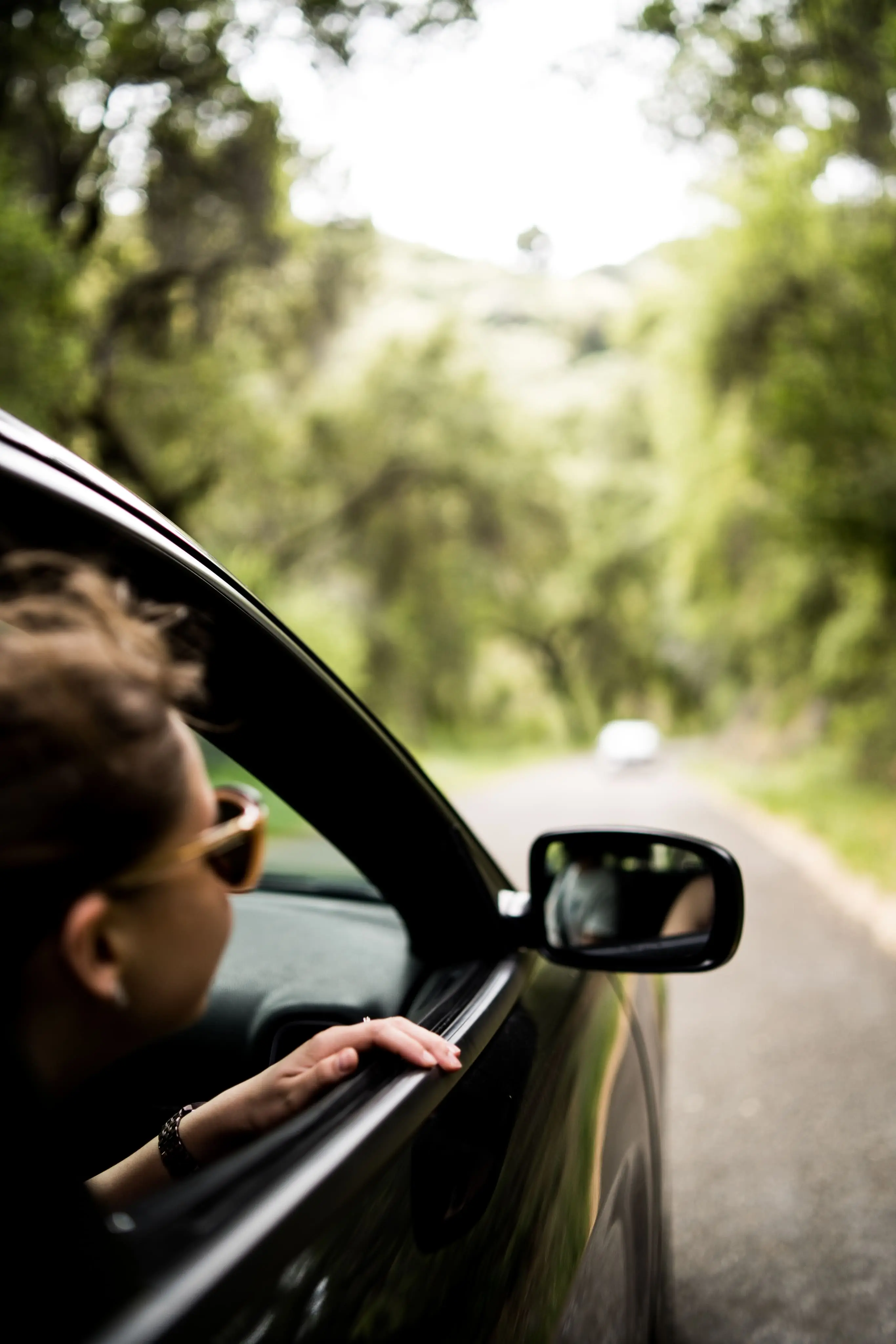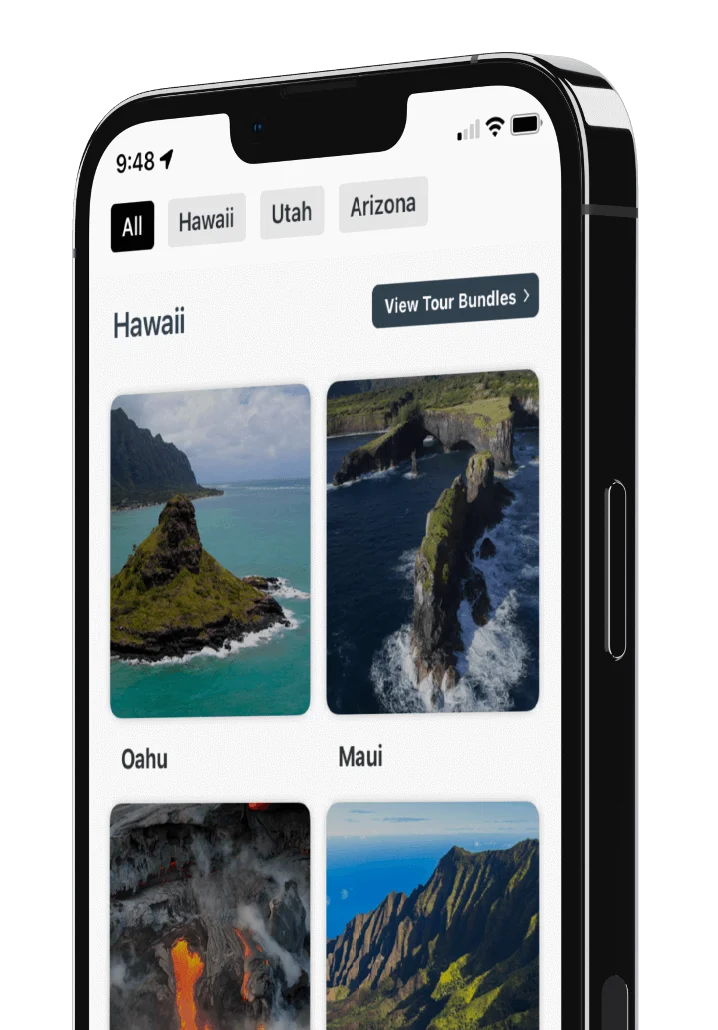
Weather in Capitol Reef National Park - When's the Best Time to Visit?

The best time to visit Capitol Reef National Park is anytime, because it all depends on what you’re looking to get out of your trip. The park is open 24 hours a day, 365 days a year, but not all services are available year-round. We’ve broken down the data on weather, crowds, costs, and more, so you can decide for yourself the perfect time to visit.
Weather in Capitol Reef National Park
Capitol Reef is situated in what’s called ‘high desert’ because of it’s relatively higher elevation to most other desert climates. The park sits at around 5,000 feet of elevation and rises from there depending where you travel or hike. The area receives an average of 7.9 inches of precipitation per year with most of that being rain during the monsoon season, July through September. This is when the risk of flash floods is at its highest and visitors need to be aware of the weather and their surroundings. Because of the elevation the park does receive some snow in winter, usually in the coldest months of December and January, but it is generally light snowfall.
Capitol Reef National Park in Spring
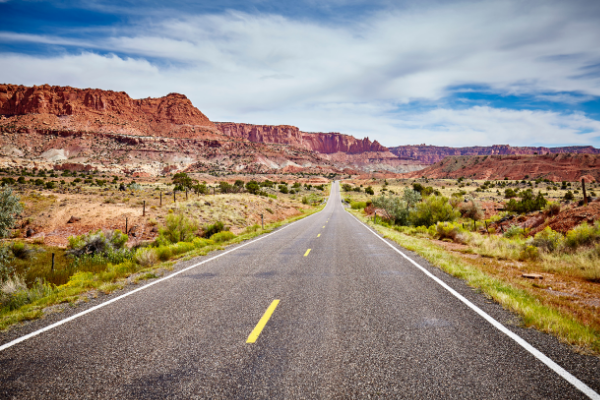 by Michiej Bledowski
by Michiej Bledowski
This is the most popular time of year for hiking in Capitol Reef. March sees the highest number of backpackers compared to any other month - and for good reason - the temperature is mild and rainfall is light. Average temperatures in March are in the mid-50s, just right for staying cool on long hikes. This also begins the time of year when reservations are required to stay in the Fruita campground. April warms up into the mid-60s and May the mid-70s.
In spring, the crowds descend and parking lots fill up fast. Capitol Gorge and Grand Wash trailheads are often full by 10am. Get there early and be flexible. If a trailhead is full, try again later. Maybe the best reason to visit in the spring is to see the lovely fruit orchards in bloom. Check the national park website to find out when trees will be in bloom. Look to spend close to $500 for flights and over $100 a night for hotels due to the influx of tourists.
Capitol Reef National Park in Summer
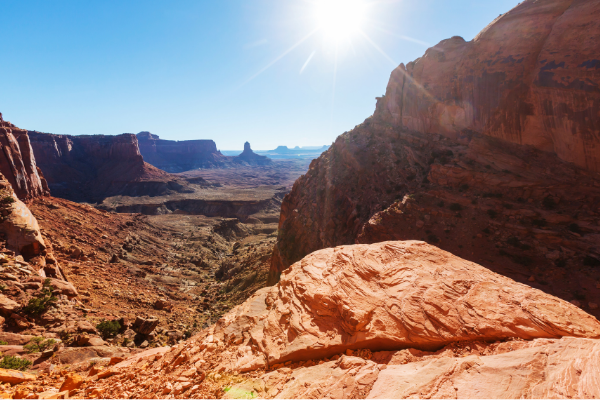 by, Kamachtka
by, Kamachtka
Capitol Reef embraces its desert climate in the summer as temperatures soar into the 90s. Still, if you drink enough water, wear a hat and sunglasses, and bring enough sunscreen, you can have a great and safe time. Late May through mid-August is when the Ripple Rock Nature Center is open. The nature center has all kinds of activities for kids like pioneer games, identifying fossils and rock layers, and making cornmeal on a prehistoric grinding stone. Even when the nature center is closed, kids can sign up at the Visitor Center for the Junior Ranger program.
Summer also starts the harvest season in the Fruita orchards. Cherries and apricots ripen first, followed by peaches and pears in August. Picking ripe fruit in open orchards is free but if you want to take any with you, you’ll need to pay a small fee.
Be sure to keep an eye on the sky and check with the visitor center frequently because summer is Monsoon season at Capitol Reef. Flash floods are a real danger in the area and can lead to road closures. If you see rain clouds in the sky, think twice before entering any canyons. If it’s raining, do not enter canyons. And remember, just because it isn’t raining where you are doesn’t mean flash floods can’t still happen.
Area hotels and Flights into nearby airports are at their most expensive in July and August due to the summer vacation season, so keep that in mind while making your plans. However, if you book early and fly on weekdays instead of weekends, you can find fares below $500.
Capitol Reef National Park in Fall
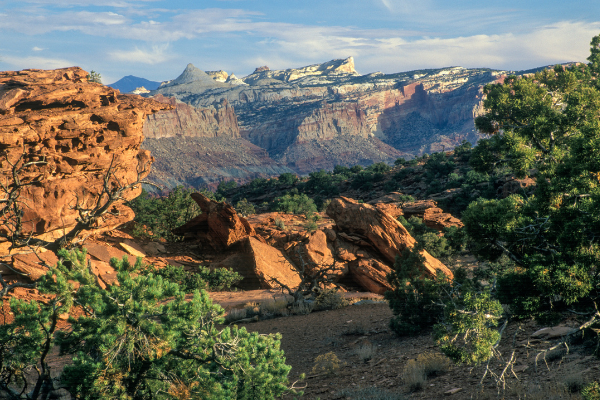 by, CampPhoto from Getty Images Signature
by, CampPhoto from Getty Images Signature
Fall may be the best time of year to visit Capitol Reef. You can pick ripe apples from the Orchard, the heavy rains are done for the year, and so are the high temperatures. The crowds have returned but with a little planning, you can avoid the worst of it. Travel on weekdays instead of weekends and arrive early or stay late. Cohab Canyon is a great hike this time of year to see the fall foliage in Fruita. The ranger programs, like the star talks and guided hikes, last through October. Fall also sees the Annual Heritage Starfest usually in late September or early October. This event features guest speakers, stargazing, and telescope viewing.
Flights into regional airports will run around $300 in the fall. This is less than spring, which is another reason to go during the fall. Hotels will still start out at around $125 a night.
Capitol Reef National Park in Winter
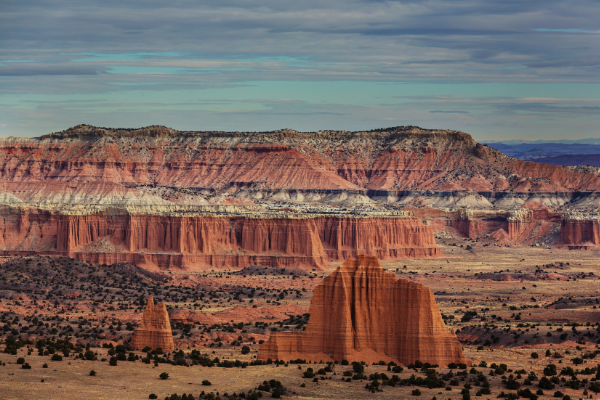 by, Kamachtka
by, Kamachtka
If you’re visiting in winter, you’ll definitely avoid the crowds. Some say the park is even more beautiful in winter. Average daily temperatures don’t usually dip below freezing even in the coldest months, so hiking is still a popular activity. Nights can get pretty cold, though, so if you plan to do any backpacking, remember to pack layers! Heavy snowfalls are rare and won’t usually cause any road closures. Visiting in winter has the added benefit of being less expensive, too, as flights into nearby airports tend to be a little cheaper in January and February. Flights are as low as approximately $250 and hotels can be found for as low as $70 a night.
Crowds
The crowds at Capitol Reef ebb and flow with the average temperatures. During the mild spring and fall seasons, attendance shoots up. In 2019, the park received 1,226,519 visitors, most of which were in the spring and fall. Attendance dips some in the Summer, July through August, due to the heat. A lot of Capitol Reef’s hiking trails lack shade and are brutal when attempted under the summer sun.
March thru June and September through November are considered the busy seasons for Capitol reef. This is when you’ll run into crowds at trailheads, viewpoints, and the Visitor Center. The park doesn’t have as much infrastructure as its sister parks in southern Utah and parking lots are small and fill up fast. We recommend arriving at the park early, by 8:30 am at the latest, to avoid the worst of it. By 10 am, a lot of the parking has filled up and won’t begin to open up until 3 or 4 pm.
This gets a little better during July and August, but not by much. This is when the Ripple Rock Nature Center is open for children’s activities and families are visiting while on summer vacation. Basically, the crowds have traded out hikers for families. This does mean the trails are a little less crowded but the heat can be overwhelming.
If you want to avoid crowds at all costs, then we recommend visiting the park in winter. You’ll miss out on a lot of the services offered during the busier months but you’ll make up for it by having the park nearly to yourself, especially out on the trails. In the winter when the trees and shrubs are bare, you can really focus on the stunning geology the park has to offer. Also, the campground stays open and doesn’t require reservations during winter, so last minute camping trips are possible.
Services / Events
March through November is when you’ll have access to most of Capitol Reef’s services. The daily ranger geology talks and junior ranger programs are offered. Fruita campground sites require reservations and fill up fast. The Gifford House Store & Museum is open from March 14th (Pi Day) thru October 31st. In late-May through October, additional evening ranger presentations are offered on various subjects, like the wildlife of Capitol Reef. Beginning in late June and running through October, you can attend special programs like star talks, guided hikes, a full-moon walk, and other ranger’s-choice activities. Every Fall in September or October, an Annual Heritage Starfest is held featuring guest speakers, stargazing, and telescope viewing.
Outside of the park, some of the businesses in Torrey and Hanksville are seasonal and only operate March - November. Because of this, if you visit the park in winter, you may have fewer choices when it comes to lodging or dining.
Parting thoughts…
The best time to visit Capitol Reef National Park truly depends on your preference, but no matter when you go, there’s plenty to keep you busy!
Like this article? Share it on Pinterest!

Ready to plan your trip to Capitol Reef National Park? Let us do the work for you! Download our Capitol Reef National Park tour now.
RELATED ARTICLES:
The Ultimate Capitol Reef National Park Travel Guide
Shaka Guide's Capitol Reef National Park Itinerary
Know Before You Go: Shaka Guide's Capitol Reef Nat'l Park Tour
Capitol Reef National Park Hiking Guide - 33 Hikes in Capitol Reef



